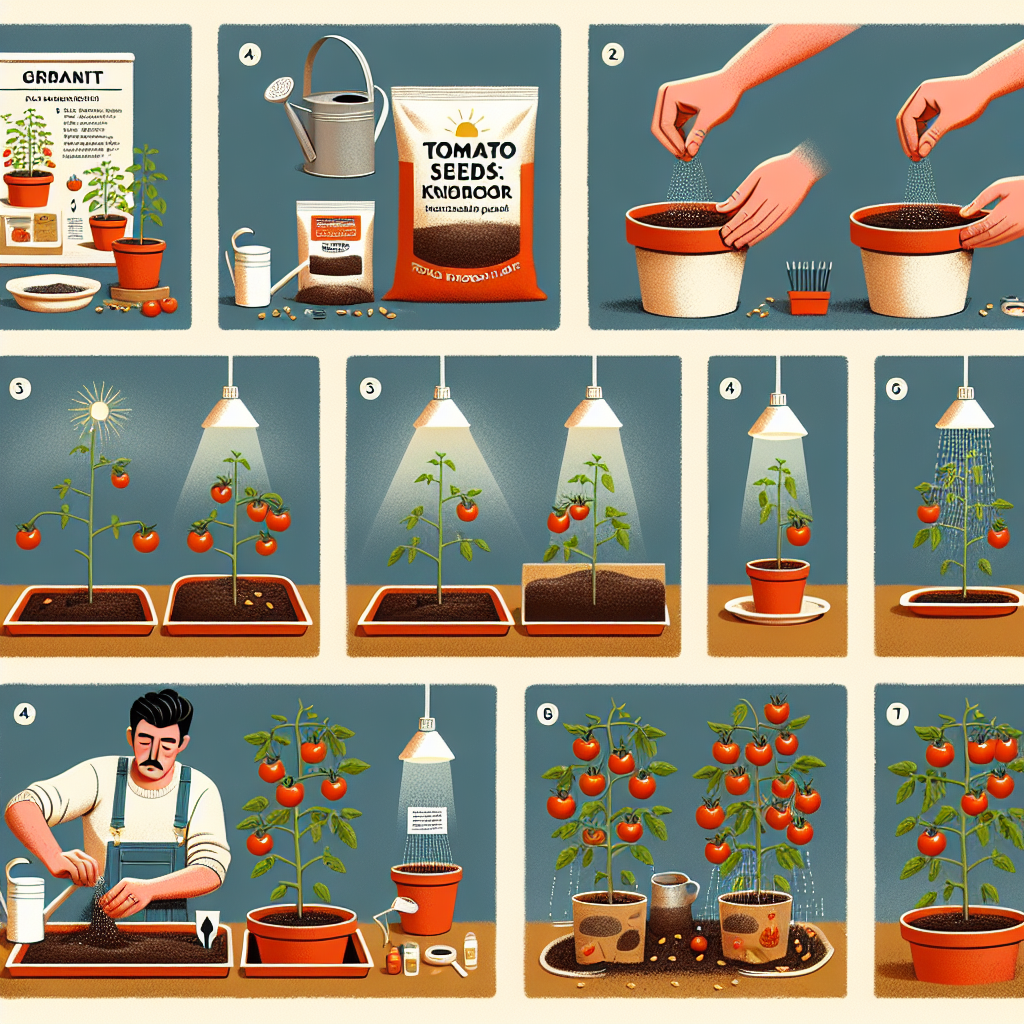
How to plant tomatoes indoors
How to Successfully Plant Tomatoes Indoors
If you've ever coveted the idea of growing your own tomatoes but were deterred by space limitations, fear not! Growing tomatoes indoors is a rewarding endeavor that can yield delicious, home-grown fruits throughout the year. This guide will walk you through the essential steps to cultivate healthy tomato plants right from the comfort of your home.
Why Grow Tomatoes Indoors?
Before diving into the intricacies of indoor gardening, it’s important to understand the benefits of growing tomatoes indoors:
- Climate Control: You can maintain optimal growing conditions regardless of outdoor weather.
- Pest Management: Indoor gardening helps minimize exposure to pests and diseases.
- Space Efficiency: Ideal for those with limited outdoor space, like apartment dwellers.
- Year-Round Harvest: With the right setup, you can produce tomatoes any season.
Choosing the Right Tomato Variety
Not all tomato varieties are suited for indoor growth. Here are some of the best options:
- Cherry Tomatoes: Compact and prolific, these are great for small spaces.
- Patio Tomatoes: Specifically bred for container growth, these varieties thrive indoors.
- Dwarf Tomatoes: Smaller plants that produce mini fruits, perfect for limited space.
- Roma Tomatoes: Good for sauces, and they can be grown in pots with proper support.
Gathering Supplies
Before you start your indoor tomato gardening journey, you’ll need to gather the necessary supplies:
- Seeds: Choose a variety suitable for indoor growth.
- Containers: Opt for pots with good drainage; 5-gallon buckets or 12-inch pots are ideal.
- Potting Soil: Use a high-quality, well-draining potting mix.
- Grow Lights: If natural light is insufficient, consider investing in full-spectrum lights.
- Fertilizer: Use a balanced fertilizer designed for tomatoes.
- Watering Can: Proper hydration is essential for healthy growth.
Steps to Plant Tomatoes Indoors
Now that you have everything you need, let's explore how to plant tomatoes indoors.
1. Prepare Your Containers
Begin by filling your chosen pots with the potting soil. Leave about an inch of space at the top for watering. Make sure each container has drainage holes to prevent water logging.
2. Sow the Seeds
Plant the seeds about 1/4 inch deep in the soil. If you’re using multiple seeds per container, thin out the weaker ones once they germinate. Here’s how to do it:
- Plant 2-3 seeds per pot.
- Cover them lightly with soil and water gently.
3. Provide Adequate Lighting
Tomatoes require around 12-16 hours of natural or artificial light daily. Use a grow light if sunlight is insufficient:
- Position grow lights 2-4 inches above the seedlings.
- Adjust the height as the plants grow to prevent them from getting leggy.
4. Maintain Proper Temperature
Indoors, tomatoes thrive best in temperatures ranging from 70°F to 80°F (21°C to 27°C) during the day and slightly cooler at night. Be mindful of:
- Avoiding drafts and extreme temperature fluctuations.
- Using a heat mat to maintain warm soil temperatures, if necessary.
5. Water Regularly
Water your tomato plants when the top inch of soil feels dry. Avoid overwatering to prevent root rot. Ensure the water drains out of the pot to keep the roots healthy.
6. Fertilize Your Plants
Once your tomato plants have grown their first set of true leaves, it's time to fertilize. Use a balanced, water-soluble fertilizer:
- Follow the manufacturer's instructions regarding dilution and frequency.
- Fertilize every 4-6 weeks during the growing season.
7. Support Your Plants
As your tomato plants grow taller, they will need support to prevent breaking. Use stakes or tomato cages, which can be inserted into the soil when the plants are still small.
Pollination for Indoor Tomatoes
Indoors, you'll need to assist with pollination since there are no bees or wind to do the job. Here’s how:
- Shake the Plants: Gently shake the plants to release pollen.
- Use a Soft Brush: Transfer pollen from flower to flower using an artist's brush or cotton swab.
Common Issues and Troubleshooting
While growing tomatoes indoors can be quite straightforward, challenges may still arise. Here’s how to handle some common problems:
Pest Control
Watch for common pests like aphids and spider mites:
- Use insecticidal soap or neem oil to manage pest infestations.
- Regularly inspect your plants for any signs of harm.
Disease Prevention
Tomatoes are susceptible to diseases, so maintain good air circulation and avoid overhead watering:
- Blight: Remove affected leaves and improve airflow around the plants.
- Powdery Mildew: Spray with a mixture of baking soda and water to help combat this issue.
Harvesting Your Indoor Tomatoes
After several weeks of careful cultivation, you’ll be rewarded with ripe tomatoes! Here’s what to do when the time comes to harvest:
- Harvest tomatoes when they have reached their full color and feel slightly firm but not hard.
- Cut them off the plant using sharp scissors or pruning shears to prevent damage.
Final Thoughts
Growing tomatoes indoors is not only a fun project but also a great way to enjoy fresh produce throughout the year. With the right setup and attention to detail, you can create your own little indoor garden, cultivating ripe, flavorful tomatoes while skipping the supermarket's produce aisle.
So, gear up, follow these steps, and soon you'll be enjoying the fruits of your labor—literally! Happy gardening!
By Guest, Published on October 5th, 2024